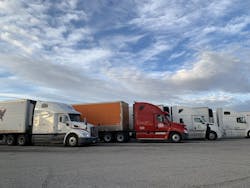Increased cost of trucking could mean it’s time for a change
The American Transportation Research Institute (ATRI) recently released the latest edition of its Analysis of the Operational Costs of Trucking. The report found that the average marginal cost per mile incurred by motor carriers in 2018 increased 7.7% to $1.82.
This is not surprising, given the increased cost of equipment over the last decade (largely due to regulatory mandates) and safety issues (lane departure, collision avoidance, anti-rollover, automatic transmissions).
It is also no surprise that, given the driver shortage, drivers’ wages and benefits saw significant increases. According to the ATRI report, drivers’ wages were up 7.0% and benefits rose 4.7%. Those two items together represent 43% of a fleet’s marginal operating costs.
Maintenance and repair costs increased from 16.7 cents a mile in 2017 to 17.1 cents in 2018, a 2.4% increase. Again, no surprise here, as it can be more challenging to diagnose today’s trucks with their more sophisticated componentry. In addition, there are likely increased labor costs in the cost of maintenance and repair as the technician shortage is every bit as real as the driver shortage. ATRI says that at least part of the increase is because trucks on the road are seeing higher mileage.
ATRI expects maintenance and repair costs to increase again in 2019. “As integrated technology has become more prominent in truck tractors, the cost of maintaining a new truck in 2018 was more expensive than maintaining a new truck in 2008. Increasing diesel technician wages also contributed to rising R&M costs, particularly with advanced technology requiring specialized technicians for maintenance,” the report states.
As the cost of operating vehicles continues to rise, more businesses should be looking for an alternative to at least insulate or cap their exposure to these increases. If they leverage the buying power of someone in the business, with tools, equipment and trained technicians, they can take advantage of the economies of scale and bring down the cost of their transportation. It is time to ask that question, “The business has changed. Have you?”
About the Author
Joseph Evangelist
Joseph Evangelist previously served as EVP for Transervice, president of LLT International Inc., and CEO of Lend Lease Trucks Inc. Evangelist is a seasoned transportation executive with domestic and international experience in sales, operations, mergers, and acquisitions.
